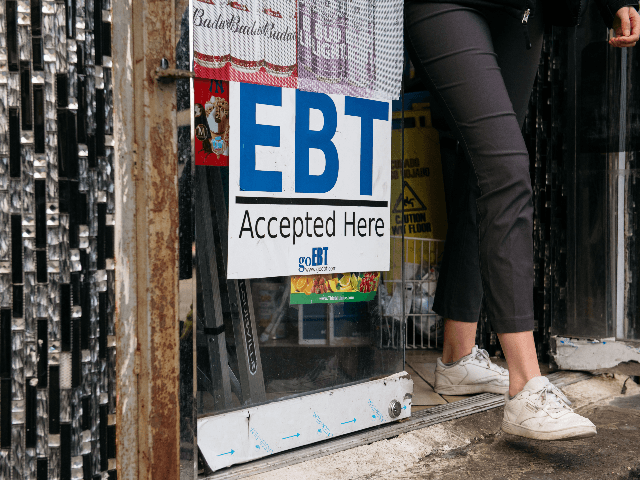More than 2.4 million households discontinued their participation in the nation’s food stamp program since President Donald Trump’s first full month in office in 2017, according to the latest U.S. Department of Agriculture (USDA) data.
The most recent USDA data showed that 2,424,901 families stopped using food stamps under the Supplemental Nutrition Assistance Program (SNAP), between February 2017— when Trump finished his first full month as president— and October 2019.
Individual participation has taken a nosedive as well, with 5,891,110 individuals cutting ties with SNAP, according to the USDA.
There are currently 36,406,681 individuals and 18,513,002 households enrolled in the food stamp program. Still, USDA officials say the 2020 data is “preliminary” given that the data may include disaster assistance.
When Trump took office, 42,297,791 individuals and 20,937,903 households were enrolled in SNAP.
But it was before Trump took office that enrollment in food stamps surged and then plunged.
Individual and household participation in SNAP had consistently declined overall since 2013, when the Obama administration was in power, and enrollment in the program reached its peak in U.S. history.
At the Great Recession’s height during former President Barack Obama’s first term in office, enrollment in SNAP grew by 135 percent and cost taxpayers $78 billion.
Food stamp enrollment plunged after state legislatures passed work requirement reform measures to curb dependency on welfare, requiring food stamp recipients to work, volunteer, attend school, or receive job training for 20 hours per week.
Enrollment has continued to decline under Trump, but the Trump administration has taken welfare reform measures a step further by taking work requirement legislation found in the states nationwide.
Breitbart News reported in December that the USDA recently finalized a SNAP proposal stating that those who are able-bodied and between the ages of 18-49 and without children or dependents who receive food stamps for more than three months in a 36-month period must work, go to school, receive job training, or volunteer to receive benefits.
The rule, which goes into effect on April 1, does not apply to those who are over 50-years-old, pregnant, disabled, or caretakers for children.
The law allows states to waive out of this time limit requirement due to poor economic conditions, but before the rule was put into place, areas with unemployment as low as 2.5 percent were eligible for waivers, according to the USDA.
The USDA estimates that approximately 755,000 people would discontinue participating in the nation’s food stamp program under the work requirements rule, and the rule would reduce federal spending by $5.5 billion over five years.
Not too long after the USDA’s final rule was passed, Democrat attorneys general representing 14 states, Washington, DC, and New York City, sued the Trump administration for eliminating states’ ability to waive work requirements in areas with poor economic conditions.
Attorneys general representing the states and the cities argued that the justification for the work requirements rule ignored local labor market conditions, the Washington Post reported.
ABC News reported that the lawsuit is being filed in the U.S. District Court for the District of Columbia and requests that the court issue an injunction before the rule takes effect on April 1.

COMMENTS
Please let us know if you're having issues with commenting.